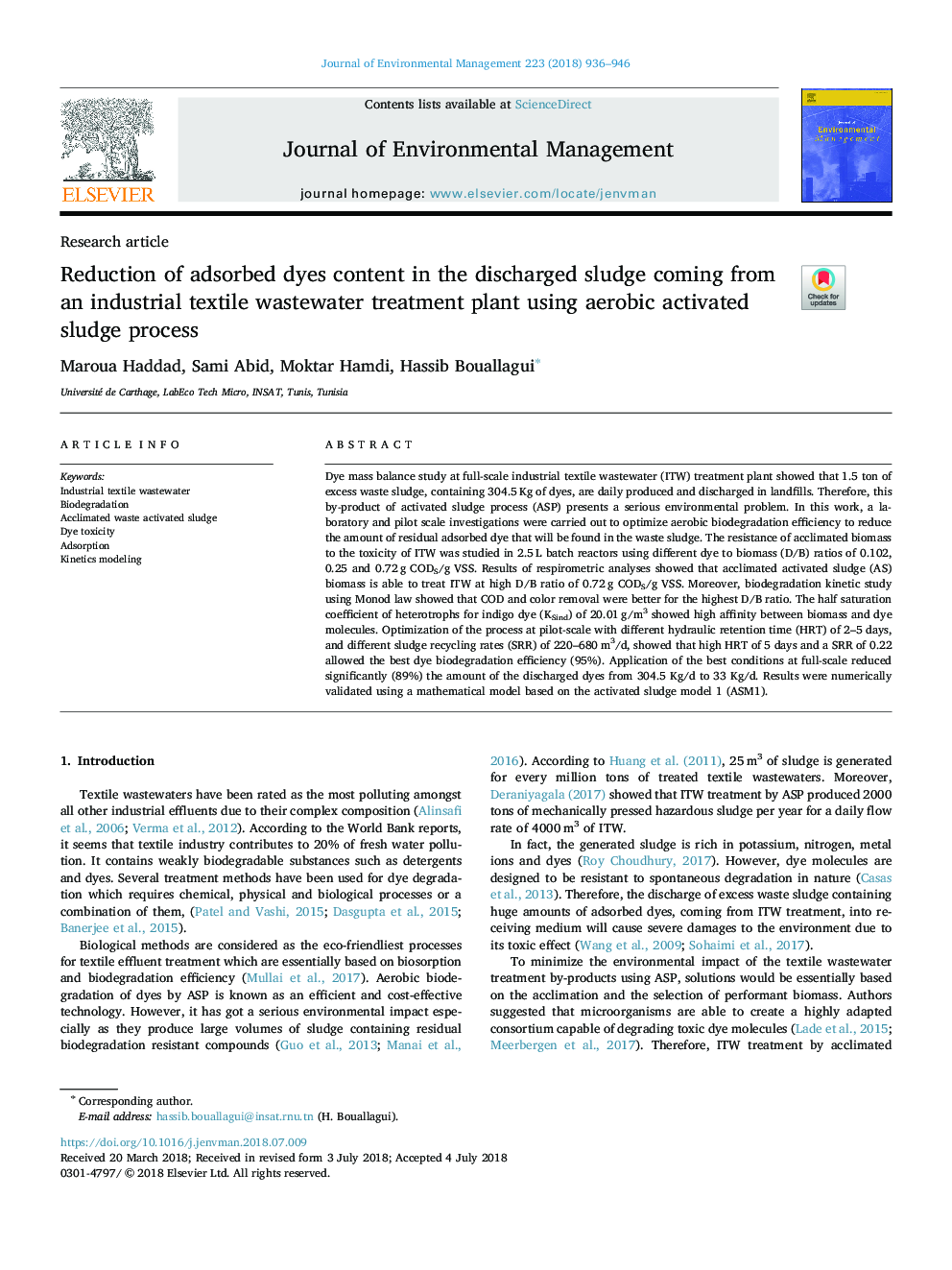| Article ID | Journal | Published Year | Pages | File Type |
|---|---|---|---|---|
| 7476298 | Journal of Environmental Management | 2018 | 11 Pages |
Abstract
Dye mass balance study at full-scale industrial textile wastewater (ITW) treatment plant showed that 1.5 ton of excess waste sludge, containing 304.5â¯Kg of dyes, are daily produced and discharged in landfills. Therefore, this by-product of activated sludge process (ASP) presents a serious environmental problem. In this work, a laboratory and pilot scale investigations were carried out to optimize aerobic biodegradation efficiency to reduce the amount of residual adsorbed dye that will be found in the waste sludge. The resistance of acclimated biomass to the toxicity of ITW was studied in 2.5â¯L batch reactors using different dye to biomass (D/B) ratios of 0.102, 0.25 and 0.72â¯g CODS/g VSS. Results of respirometric analyses showed that acclimated activated sludge (AS) biomass is able to treat ITW at high D/B ratio of 0.72â¯g CODS/g VSS. Moreover, biodegradation kinetic study using Monod law showed that COD and color removal were better for the highest D/B ratio. The half saturation coefficient of heterotrophs for indigo dye (KSind) of 20.01â¯g/m3 showed high affinity between biomass and dye molecules. Optimization of the process at pilot-scale with different hydraulic retention time (HRT) of 2-5 days, and different sludge recycling rates (SRR) of 220-680â¯m3/d, showed that high HRT of 5 days and a SRR of 0.22 allowed the best dye biodegradation efficiency (95%). Application of the best conditions at full-scale reduced significantly (89%) the amount of the discharged dyes from 304.5 Kg/d to 33 Kg/d. Results were numerically validated using a mathematical model based on the activated sludge model 1 (ASM1).
Related Topics
Physical Sciences and Engineering
Energy
Renewable Energy, Sustainability and the Environment
Authors
Maroua Haddad, Sami Abid, Moktar Hamdi, Hassib Bouallagui,
